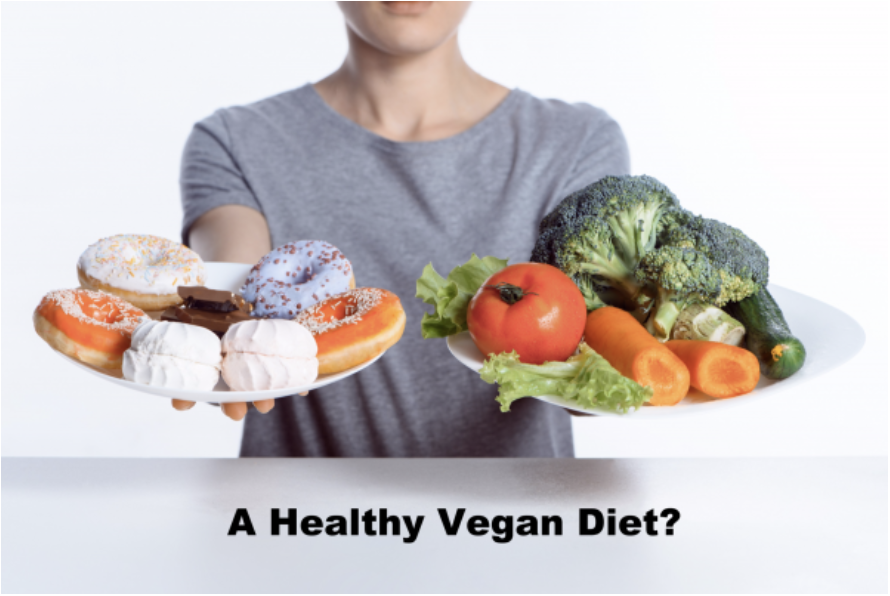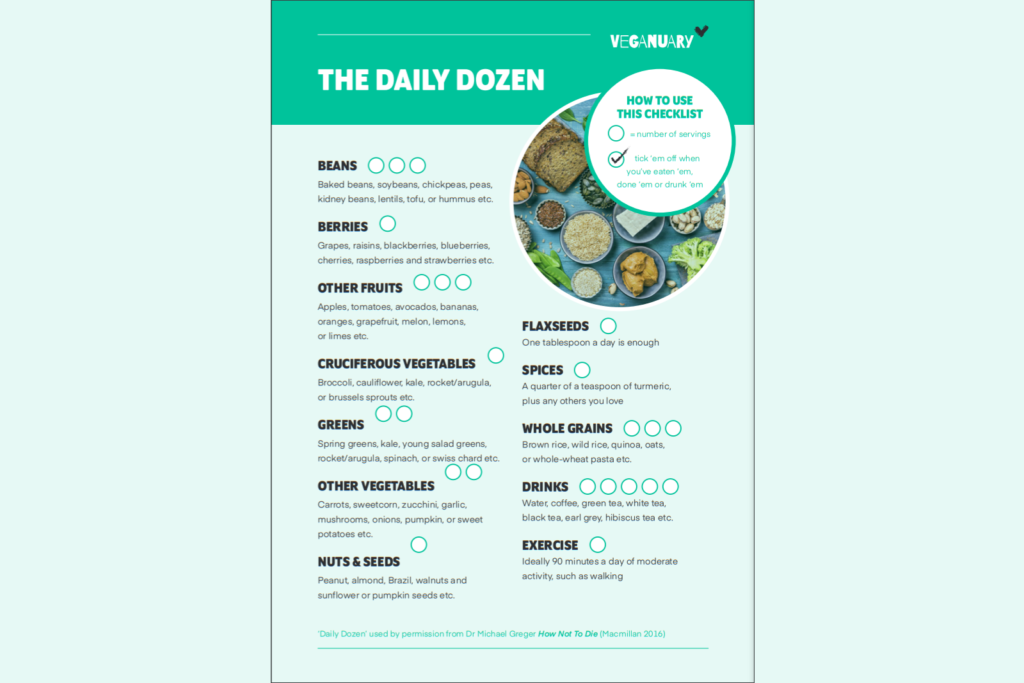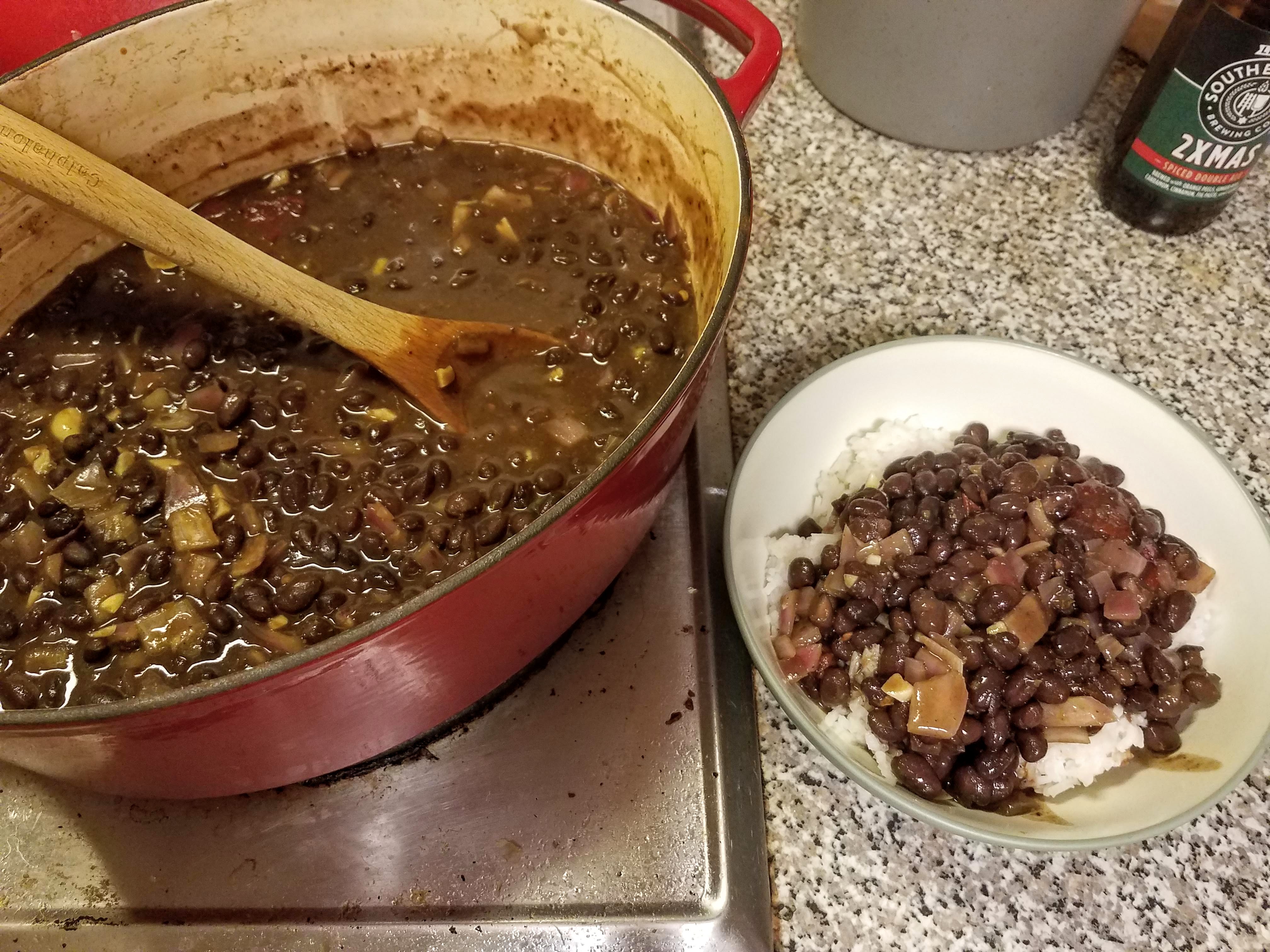Part 4 – Healthy Choices, Continued
Proper nutrition is a seriously complex issue. There are fields of study devoted to it, and I will not claim to be an expert after a few weeks of researching vegan health for this blog. What I had originally intended to be a one-week installment has grown into two, not just because of the wealth of information on the subject but also my level of ignorance. I can talk about animal welfare and carbon footprint until I’m blue in the face, but really understanding vegan nutrition was necessary for this month-long experiment, when I had never previously adopted a vegan diet for more than one or two days at a time.
Fortunately, by signing up for Veganuary, I’ve been getting information on proper nutrition delivered to my inbox, which has helped greatly.[1] But again, don’t take my word for it. Do your own research and talk to your doctor before making changes to your diet.
Iron
Protein is not the only consideration when looking at dietary health for vegetarians and vegans. When I stopped eating red meat in high school, my iron levels dropped, meaning I was turned away from donating blood as often as not. Iron is critical for healthy red blood cells, which carry oxygen throughout the body. People with low iron levels often experience fatigue, which is why whenever I’ve told a doctor I’ve been feeling tired, one of the first (and often only) things that I got was a prescription for iron supplements.
The Recommended Dietary Allowance of iron for adults is 8mg daily for men and post-menopausal women; 18mg for pre-menopausal women.[2] You can replenish your iron levels through food, supplements, and even by cooking in a cast iron pan. However, not all iron sources are created equal as far as your body is concerned. Iron derived from hemoglobin, called “heme” iron, is only found in animal flesh and is more easily absorbed by the body than “non-heme” iron, which comes from vegetarian and vegan sources, such as eggs, dairy, beans, spinach, sweet potatoes, and dark chocolate.

An interesting note: “heme iron” is not to be confused with “heme,” the artificial hemoglobin that makes Impossible Burgers “bleed.”[4] (My husband asked about the difference, indicating that he does, in fact, read my blog, despite his claims to the contrary.) Something else that has happened since starting this research is that I’ve gotten a lot of vegan supplements showing up in banner ads on websites. One of the ones that caught my attention was for heme iron supplements. I can’t imagine how that product could possibly be vegan if heme iron is only sourced from one (decidedly not vegetarian) place.
But you do need to get iron if you’re not eating meat. You can try to simply load up on non-heme iron and hope that your iron levels increase, but it’s not quite that simple. In fact, what you eat along with iron-rich foods can increase or decrease your body’s ability to absorb non-heme iron. For example, taking Vitamin C during the same meal as non-heme iron can increase absorption by the body. However, things like bran fiber, large amounts of calcium, and certain plant substances like “phytates” (found in whole grains, seeds, legumes, and some nuts) can decrease iron absorption.[5] I learned about phytates when I did the Whole30 Challenge [6] because they’re one of the reasons you can’t eat legumes during the initial elimination period. I then learned during the evaluation period that sprouting legumes before cooking them helps reduce the level of phytates and increases their digestibility in general.[7]
B12
While iron deficiency was always the thing that got tested when I mentioned fatigue to my doctor, I never heard anything about Vitamin B12 until I started researching vegetarian/vegan health over the past few months. B12 helps your cells function properly, including in forming DNA. It supports development of brain and nerve cells. If you’re not getting enough, you’ll feel fatigued. Cutting out meat and dairy doesn’t provide many other options for getting B12 except nutritional yeast and foods such as breakfast cereals and vegan milks that specifically state they’ve been fortified with it.
The other option is taking a B12 supplement.[8] I started taking one the first week of January, and I couldn’t believe how not-tired I’ve felt since then. (I don’t feel energized like I took a stimulant, rather, the only way I can describe it is as an absence of exhaustion.) B12 is water-soluble and does not get stored in the body. The supplement I’m taking is (I’m not kidding) 20,000% of my daily 2.4 microgram requirement, which initially struck me as unsafe, but whatever I don’t use leaves my body at the end of the day. So, worst-case, I’ve made some B12-rich urine.

Other Considerations
Calcium builds strong teeth and bones, but it’s also good for your muscles, heart, and nerves. Adults need 1,000 mg a day; seniors, 1,200 mg. If you’re not drinking milk, you can still get calcium from leafy greens (e.g. kale and spinach), edamame and tofu, fortified breakfast cereals, or vegan milk alternatives.[10] Keep in mind that certain foods containing “anti-nutrients,” such as phytates, can limit how much calcium your body absorbs.[11] If you’re not getting enough, your body will “borrow” it from your bones. Vitamin D supplements help with calcium absorption, so I started taking one this winter while stuck inside, battling seasonal depression until the sun returns.
Iodine is an essential mineral that we cannot produce ourselves. Healthy levels (150 micrograms a day for adults, more for pregnant and lactating women) help the thyroid function properly, regulating metabolism and creating protein and enzymes in the body. Low levels can lead to hypothyroidism, which can cause fatigue, sensitivity to cold, constipation, and weight gain. Too-high levels, while rare, can result in hyperthyroidism and cause extreme weight loss, irregular heartbeat, and hand tremors. While fish, meat, eggs, and dairy contain iodine, in a vegan diet, it’s easiest to get healthy amounts through iodized salt and seaweed.[12]
Omega 3s are fatty acids that support cell health. They may also play a role in preventing heart disease and stroke, and may help control lupus, eczema, and rheumatoid arthritis. We cannot make these on our own and can only get them from our food. The Omega 3 supplements I used to take were made from fish oil, meaning they’re out of the question this month. Fish are a great source, but you can also get them from vegetable oils, walnuts, flax seeds, and leafy vegetables.[13]
Of course, this list is not exhaustive, and my research will continue after January is over because I do at least want to be a healthy vegetarian, if not a healthy vegan. From what I have read, though, it does seem that tracking these essential nutrients is less of an issue as long as you’re eating a well-balanced diet of nutrient-dense whole foods. Next week will wrap up this January adventure (already!) with the environmental impacts of veganism. But until then, I’ll leave you with a quick, delicious, and nutritious recipe that was one of my go-to dishes, even before Veganuary…

Recipe: Black Beans and Rice
Christian was raised in a family with ties to Italy, Lebanon, and Cuba – and, consequently, incredible family recipes. One of my favorite things my mother-in-law makes is Cuban beans and rice, which she learned from her mother-in-law. I asked her for the recipe, and much to my dismay, it isn’t much more than a list of ingredients. As you may know by now, I’m largely incapable of cooking without a detailed roadmap, so I went looking for instructions. One recipe I found [15] at least got me into the ballpark on ingredient quantities, if not process. Christian’s feedback the first time I made it was that his mom’s is better. Feedback the second time was that it needed more vinegar than what I’ve got listed below. I’ll assume that indicated an improvement. The recipe in the link has more details on cooking the beans from dry (which means you have the opportunity to sprout them if you like!) but I’ve been taking the quick, easy, weeknight approach with canned beans.
Ingredients:
- 4 15oz cans black beans (I don’t rinse them – using the liquid in the cans adds some thickness and flavor)
- 2 Tbs olive oil
- 1 medium onion, diced
- 2-4 hot peppers (MIL uses whole hot banana peppers or jalapeños from the garden; I finally finished up that can of chipotles that were finding their way into all of my cooking since Thanksgiving)
- 6 cloves garlic
- 2 bay leaves
- 1 Tbs salt
- 1 Tbs cumin
- 1 Tbs dried oregano
- 1 tsp pepper
- ½ tsp cayenne
- 1 Tbs white vinegar
- 2 cups rice (or grain of your choice)
In a large pot, sauté onions, garlic, and peppers in the olive oil until soft. Add salt, cumin, oregano, pepper, and cayenne, and continue to stir until everything is combined. Add the beans and stir until everything is heated through. Turn off heat and stir in vinegar.
Meanwhile, cook your rice according to package instructions, using either water or veggie broth for some added flavor. Rice is the traditional option here, but my mother-in-law has recently been making it with quinoa for some added nutrition.
~
What are your biggest concerns about nutrition? What have you done to replace dietary essentials as a vegetarian or vegan? I’d love to hear about it in the comments below.
Thanks for reading!
[1] https://veganuary.com/eating-guides/nutrition-tips/
[2] https://www.hsph.harvard.edu/nutritionsource/iron/
[3] https://happyhormonesforlife.com/vegan-diet/
[4] https://radicalmoderate.online/beyond-impossible-meatless-meat-part-1/
[5] https://www.hsph.harvard.edu/nutritionsource/anti-nutrients/
[7] https://wholefully.com/sprouting-101/
[8] https://www.hsph.harvard.edu/nutritionsource/vitamin-b12
[9] https://veganuary.com/wp-content/uploads/2020/11/dailydozen-checklist-US.pdf
[10] https://www.hsph.harvard.edu/nutritionsource/calcium/
[11] https://www.hsph.harvard.edu/nutritionsource/anti-nutrients/
[12] https://www.hsph.harvard.edu/nutritionsource/iodine/
[13] https://www.hsph.harvard.edu/nutritionsource/what-should-you-eat/fats-and-cholesterol/types-of-fat/omega-3-fats/
[14] https://www.peacefuldumpling.com/5-best-vegan-holiday-beers
[15] https://thelemonbowl.com/cuban-black-beans-and-rice-recipe/
0 Comments